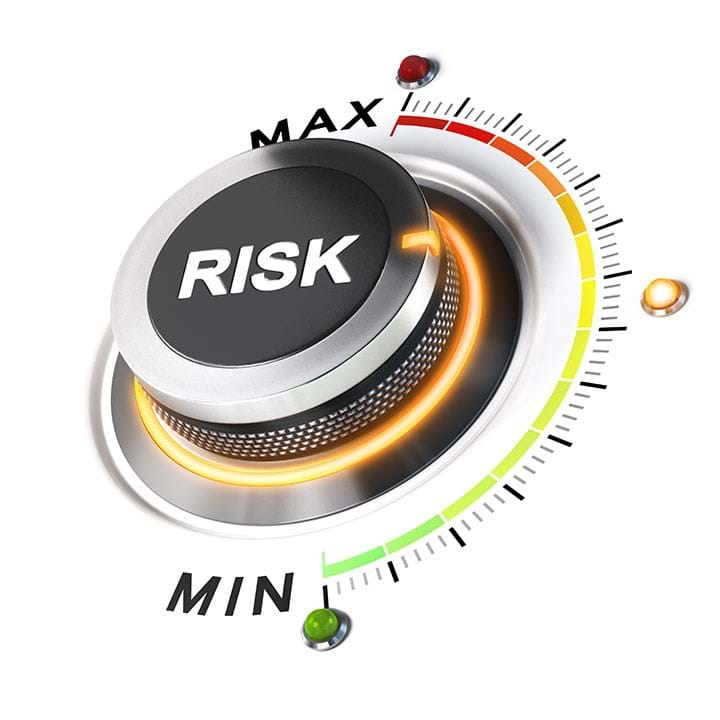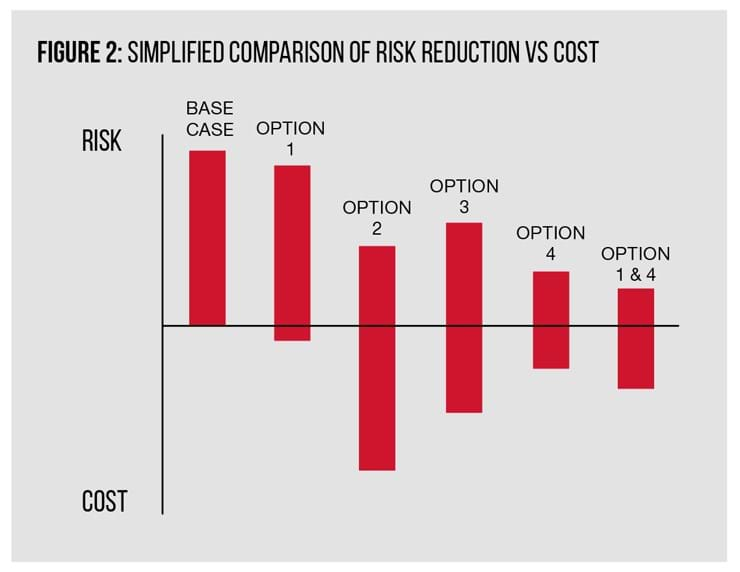QRA: Ten Golden Rules

Glenn Pettitt and Martyn Ramsden explain how quantitative risk assessment can be used to determine cost beneficial options
QUANTITATIVE risk assessment (QRA) is a technique that has been widely used in high-hazard industries to assess the tolerability of major accident risks and to aid decision-making processes. Figure 1 provides a simplified diagram of the QRA process. However, the usefulness of QRA in certain circumstances has been questioned in recent years1, particularly where the technique has been ‘commoditised’. In many cases, it is a fair statement that a QRA will add little to an understanding of the basis of safety and will be used primarily as a ‘tick-box’ exercise.

Where QRA is most useful is to compare the risk reduction gained against the cost of various layout or risk reduction options to determine their cost-effectiveness. When comparing against cost, the baseline QRA needs to reflect the likelihood and consequence of incidents as accurately as possible. Once the baseline QRA is established, the reduction in risk can be measured as a percentage and compared with the relative costs of each option to determine whether the proposed option is viable. Figure 2 is an illustration of the risk reduction compared with the cost of different options once the base case has been established. In this example, option 4 is the most attractive, as this presents the greatest level of risk reduction for a relatively low cost. Combinations of options may provide further cost-effective risk reduction.

Hence, QRA is not just about meeting certain safety and environmental targets. It can be used as an engineering method to determine the most cost-beneficial option and thus deploy resources most effectively in the pursuit of an optimum solution. Companies have used QRA to demonstrate that the costs of some expensive options are disproportionate to the risk involved, thus avoiding unnecessary costs that could make the project economically unviable.
When conducting a QRA, there are some common issues that should be considered, and pitfalls that should be avoided to ensure that the results generated by the risk assessment are meaningful and therefore helpful. The conclusions of the study then can be confidently used by management for decision-making and justification. This article provides ten golden rules of conducting a QRA to ensure that the study is not just another safety task carried out without thinking during a project, but is one that provides important insights.
1. Before you start, ask whether QRA is the best tool to use
Sometimes too much emphasis is put on QRA. QRA is just one of several tools available to risk and safety managers, and some of these other tools may be more appropriate than QRA. QRA can be very useful, but it is important to check that it is the best way of achieving the desired objectives.
An example of a facility where a QRA is unlikely to be an appropriate tool is a gas plant in a remote location, eg in a desert. The occupied buildings are likely to be designed to be sufficiently far away from the hazardous areas, such that simple consequence modelling may be sufficient to clarify the separation distances required.
Also, if a risk assessment is to be conducted, a semi-quantitative risk assessment may be more appropriate. A risk matrix can identify the high risk areas for appropriate risk reduction if this is required. In many cases, full quantification of the risk may not be required.
In the past, QRAs have typically not been conducted for many refineries in design or in operations, as the consequences of hazardous events from particular units are well documented and the key issue may be to ensure that occupied buildings are at a sufficient distance away from the various units. However, hydrogen fluoride alkylation (HFA) is an example of a unit that has often been the subject of a QRA. This is because the toxic effects of a loss of containment of HF can be very far-reaching and the facility may be investigating the benefits of various risk-reduction options. In this case, QRA may be appropriate for a sub-section of a facility only, but not the whole installation.
2. Conduct a review of past incidents
In any process safety study, it is important that the study is based on a sound understanding of past incidents. A review of past incidents is therefore essential at the outset of the study, ie during the hazard identification stage, to ensure that the effects of all such incidents are included in the study.
There is a distinct lack of credibility of a QRA if such experience is not taken into account. Imagine conducting a risk assessment of a FCCU without referring to the incidents at Norco in 1988, La Mede in 1992, and Pembroke in 1994 in the initial hazard identification. An inability to understand or to be informed about such events casts doubt on the credibility of the QRA analyst.
3. Screen the hazards
In order to carry out a QRA efficiently, it’s important to know not only which scenarios to include, but also which scenarios can be excluded without compromising the conclusions of the study. One criticism of QRAs has been the inclusion of hazards that did not, or, more relevantly, could never contribute significantly to the site risk. This rule links to the importance of having a clear objective for the study. If the objective is simply to understand offsite risk, then many hazards are not relevant and can safely be ignored to concentrate on those having the potential to affect offsite population groups.
It has been the case with QRAs that much effort (and therefore cost) has been spent analysing hazards that have no significant part to play in the overall risk picture, and which will not affect the conclusions of the study. A simple screening exercise of events from a consequence perspective would identify those events that could be left out of the study. Hence, a bit more effort ‘up front’ would save much effort, cost and complexity further into the project. This will also provide space to analyse the causes of the remaining hazards, which will be important in assessing the risk reduction measures (see rule 10).
It may be the case that a small loss of containment could escalate into an event with much more severe consequences. For example, a jet fire impinging on an LPG sphere could cause a BLEVE, projecting vessel fragments a much greater distance than the thermal radiation of a jet fire. Again, such scenarios need to be screened ‘up front’ so that the events considered for inclusion are logical and agreed by all parties before moving forward.
4. Use appropriate failure rate data
Recent Editions
Catch up on the latest news, views and jobs from The Chemical Engineer. Below are the four latest issues. View a wider selection of the archive from within the Magazine section of this site.




